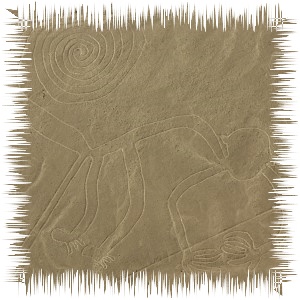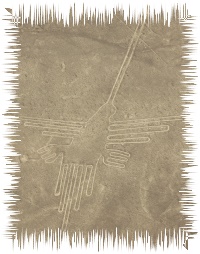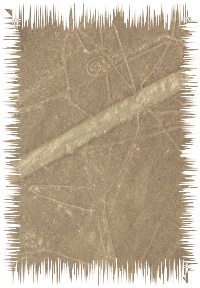|
From AD 100 to AD 600 the Cultur of the Nasca lived in the south of Lima.
One of the most distinctive feature of the Nasca culture is the production of ceramics in their own
manufactories.
The ceramics are decorated with motifs from their daily life or show abstract figures or symbols.
But not only the ceramics have this fantastic symbols. The complete area (500 sq km) between the
current province of Nasca and Palpa shows this formations in gigantic dimensions.
You can find almost 800 perfect straight lines with a lenght of more than several kilometers, 300 geometric
figures and some 70 spectacular animal and plant drawings like hummingbird, killer whale or monkey.
But the question remains: Who constructed the lines and why?
And how did they know what they were doing when the lines can only be properly appreciated from the air?
- Some people have the opinion that the culture of Nasca just liked drawing pictures and so they designed
a big drawing book.
- Other people think that this was an extraterrestrial landing site.
- The German mathematician Maria Reiche had another theory.
She analysed the lines of Nasca for more than 40 years and she spent every free minute there
until the age of 95.
And someone who has visited this area knows that it isn't easy to stay there.
For the whole year there are more than 40 degrees centigrade and there is no shadow at all.
Maria analysed all the lines and symbols with just having a ladder because the signs can only be
seen from above and not on ground level?
|
Maria discovered alignments between the sun, stars and lines.
She claimed that the lines were an astronomical calendar developed for agricultural purpose.

The UNESCO accepts the theory of Maria and proclaimed the lines a
"Mankind Cultural Heritage"
We think that theory one or two must be the most ... because concerning the theory of Maria the
culture of Nasca must have intented something.
And concering our experiences in Peru brilliant invention is not the daily business of the Peruvians.
And should their ancestors have been so much more shrewd?
Now it belongs to you: Which theory will you believe?
|






